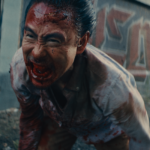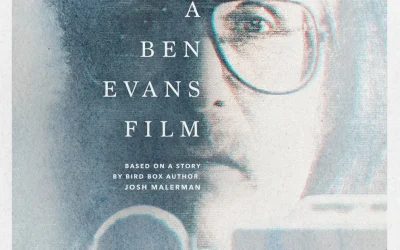Edgar Allan Poe, the master of macabre and mystery, is renowned for his chilling tales. They have captivated readers for generations. His ability to blend psychological suspense and storytelling paved the way for modern horror and mystery genres. He draws inspiration from his tumultuous life and inner demons. Poe’s works continue to serve as a cornerstone for portraying fear and enigma in literature.
In this article, we will delve into the world of cinematic adaptations of Poe’s stories. We’ll uncover how filmmakers have embraced his narratives to create riveting horror experiences. For students intrigued by the enigmatic allure of Edgar Allan Poe’s stories, delving into his tales can provide captivating literary expertise and a source of inspiration for academic pursuits. Whether tasked with unraveling the mysteries of Poe’s narratives in a classroom setting or seeking to enhance their writing skills, students can find valuable lessons in his storytelling techniques.
From dissecting characters’ psychological depths to understanding the power of atmosphere and ambiguity, exploring Poe’s works can illuminate the art of crafting compelling essays. They will engage readers and evoke a sense of curiosity. So, the next time you’re grappling with the thought, “Somebody, please write my essay for me,” consider drawing insights from Poe’s enigmatic storytelling.
The Intricacies of Poe’s Enigmatic Narratives
Poe’s literary genius lies in his adeptness at weaving intricate narratives. It blurs the lines between reality and the supernatural. His stories often feature unreliable narrators. They lead readers down a labyrinthine path of uncertainty and dread. This intricate technique of storytelling translates into the realm of cinema. Remember, filmmakers have the tools to manifest the eerie ambiance that Poe’s narratives demand.
One of Poe’s most celebrated works, “The Tell-Tale Heart,” exemplifies his enigmatic storytelling. The short story’s protagonist, plagued by his guilt and paranoia, becomes an unreliable narrator. This leaves readers questioning the true nature of the events. Cinematic adaptations of this story, such as the 1960 film directed by Ernest Morris, heighten the suspense through visual cues.
This allows the audience to witness the protagonist’s unraveling psyche. Eerie Atmosphere and Setting Poe’s stories are characterized by their haunting atmospheres and sinister settings. His tales’ decrepit mansions and oppressive environments are integral to the horror. Cinematic adaptations harness the power of visuals to create a palpable sense of unease.
In Roger Corman’s series of Poe-inspired films from the 1960s, including “The Fall of the House of Usher” and “The Masque of the Red Death,” the Gothic architecture and lavish set designs contribute to the unsettling ambiance. It draws viewers into Poe’s world of impending doom. The
Enigmatic Allure of Death Death, a recurring theme in Poe’s work, is often portrayed with mysterious allure. His exploration of mortality, decay, and the supernatural has resonated deeply with audiences, challenging them to confront the unknown. “The Raven,” one of Poe’s most iconic poems, has been adapted cinematically, most notably in the 1963 film directed by Roger Corman.
Vincent Price’s mesmerizing performance as the tormented protagonist conveys the complex emotions of grief and fear inherent in Poe’s writing.
Psychological Horror and Unraveling Minds
Poe’s exploration of the human psyche and its darker corners has left an indelible mark on the horror genre. He delves into madness and obsession, inviting readers to confront their fears and vulnerabilities. These themes have translated effectively onto the silver screen.
This allows filmmakers to capture the disintegration of the human mind visually. In Stuart Gordon’s 1991 film adaptation of “The Pit and the Pendulum,” the protagonist’s descent into madness is portrayed with vivid intensity, making the audience question what is real and what is merely a product of his tortured imagination.
The Allure of the Unseen and Unspoken
Poe’s mastery lies in his ability to evoke horror through suggestion rather than explicit description. He understands that what is left unsaid can be more frightening than what is revealed. This concept of the unseen and the unspoken serves as a cornerstone of cinematic adaptations of his work.
In “The Cask of Amontillado,” a story of revenge and burial, the 1962 film “Tales of Terror” by Roger Corman accentuates the tension by leaving specific details to the imagination, allowing the audience to fill in the gaps with their fears.
Modern Interpretations: Enigma in Contemporary Cinema
The influence of Edgar Allan Poe’s enigmatic storytelling extends beyond the classic adaptations. Contemporary filmmakers continue to draw inspiration from his works, infusing his themes into new narratives. Movies like “The Others” (2001), directed by Alejandro Amenábar, and “Stoker” (2013), directed by Park Chan-wook, exemplify how Poe’s legacy lives on in modern horror cinema.
These films embrace the essence of enigma and psychological horror. They create an atmosphere of tension that pays homage to Poe’s mastery.
Edgar Allan Poe
A master of mystery and horror, he has left an indelible mark on literature and cinema. His unique storytelling style, filled with eerie atmospheres and complex characters, has been a treasure trove for filmmakers seeking to create spine-tingling experiences. Poe’s stories come alive on screen, from haunted mansions to unraveling minds.
They invite us to explore the darker corners of our imagination. Poe often blurs the lines between reality and the supernatural in his tales. This leaves readers and viewers guessing what’s genuinely happening. This enigmatic quality has found a perfect home in movies. Here, visual cues and suspenseful scenes enhance the thrill of uncertainty. From the heart-pounding “Tell-Tale Heart” to the haunting “Masque of the Red Death,” filmmakers have embraced Poe’s settings and ambiance to make us feel the eerie sensations as if we were in his world.
Poe’s fascination with death, madness, and the unknown has resonated with audiences for generations. Cinematic adaptations, such as Vincent Price’s captivating portrayal in “The Raven” or the intense descent into madness in “The Pit and the Pendulum,” have brought these themes to life in ways that send shivers down our spines. As the torchbearers of Poe’s legacy, modern filmmakers continue to weave his enigmatic threads into their stories.
This proves that his tales of mystery and horror are timeless and everlasting.
Conclusion
Edgar Allan Poe’s enduring legacy as a master of writing mystery and horror lies not only in his haunting narratives. It also lies in the cinematic adaptations that have brought his stories to life on the silver screen. The enigmatic allure of his works continues to captivate audiences. It invites them to explore the depths of human psychology, fear, and the unknown.
Filmmakers have harnessed Poe’s storytelling techniques to craft visual experiences. They resonate with the unsettling beauty of his prose. As we navigate the world of cinema, Poe’s stories remain a testament to the enduring power of enigma in the realm of horror.















